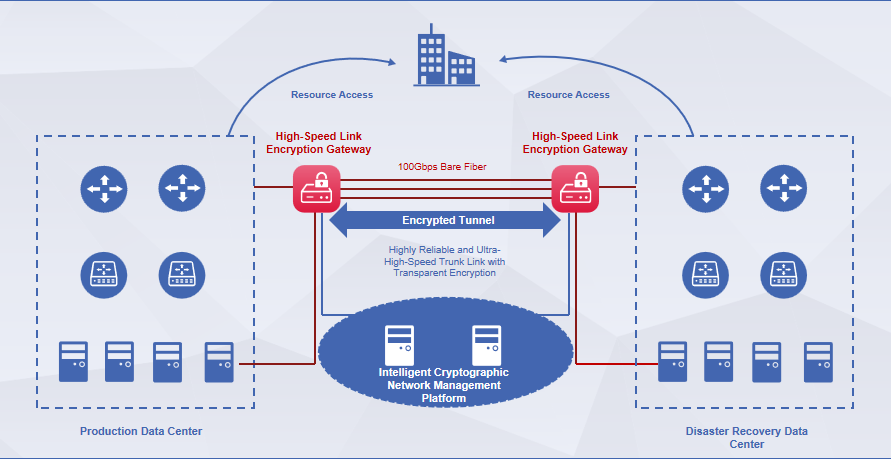
Contact WebRAY

-
 Transparent Bridge Deployment
Transparent Bridge DeploymentThe high-speed link encryption gateway supports IP-less deployment. It can be transparently integrated into existing networks without altering the current network topology, enabling plug-and-play operation.
-
 Flexible Application Mechanism
Flexible Application MechanismIt supports encryption and decryption at the data link layer, IPsec VPN function at the network layer, configuration of plaintext/ciphertext transmission policies, and real-time online updating of communication keys.
-
 Ultra-Low Latency Encryption
Ultra-Low Latency EncryptionThe FPGA hardware encryption mode of the gateway achieves encryption latency within 100 microseconds, significantly outperforming traditional encryption methods.
-
 Cryptography-Defined Network Boundary
Cryptography-Defined Network BoundaryIt defines distinct security domains for different device groups through key-based grouping policies and enables cryptographic segmentation of the network boundary. This approach supports isolation of service subnet isolation and user access control.
High-Speed Link Encryption Gateway for Carrier MAN and WAN Backbone Links
The high-speed link encryption gateway is designed for secure encryption in high-speed, low-latency data communication scenarios, including: - Carrier-grade metropolitan and wide area networks (MANs/WANs) - Remote disaster recovery between data centers and cross-domain data transmission links - International backbone links - “Eastern Data and Western Computing ” data center links; - Multi-branch networking links


.png)




